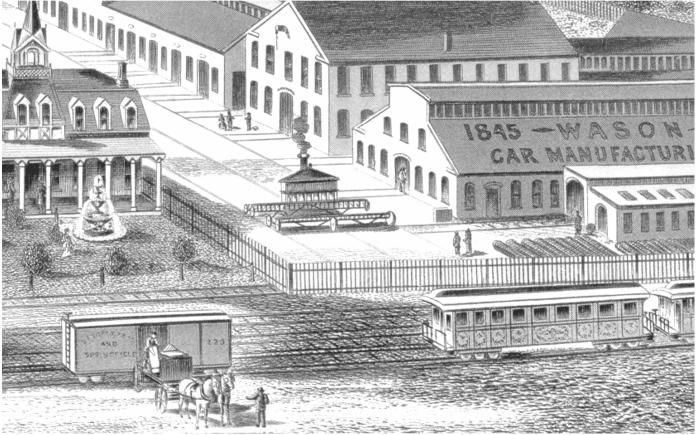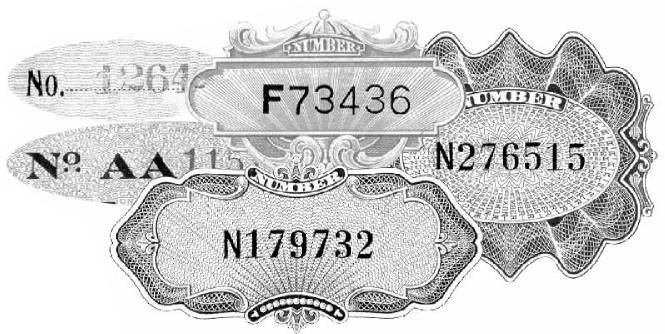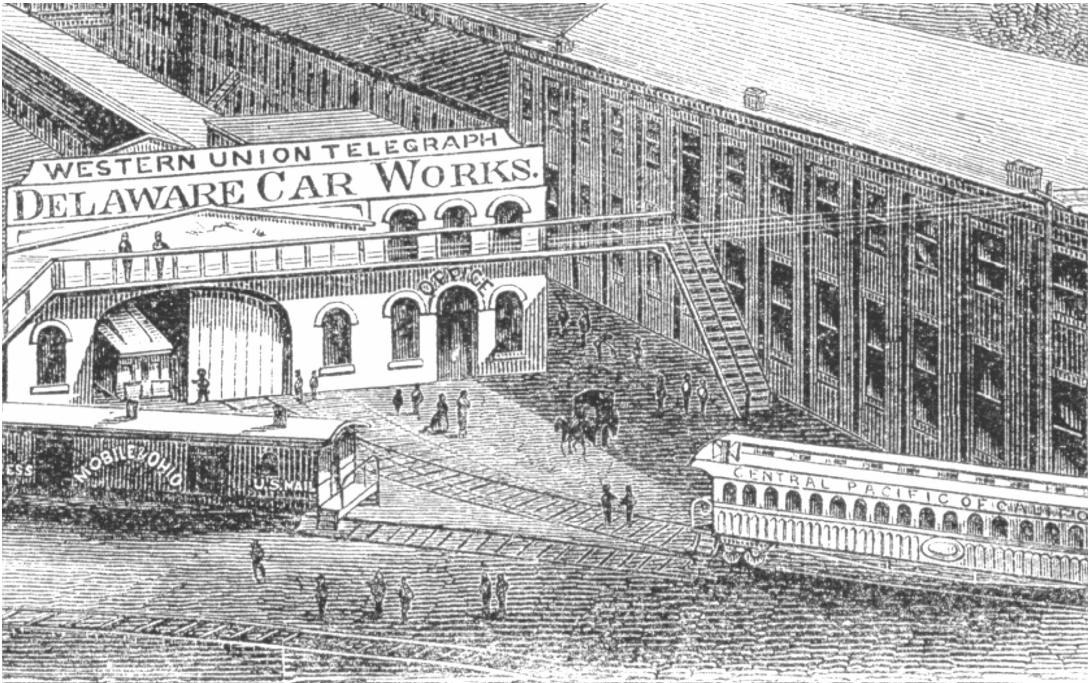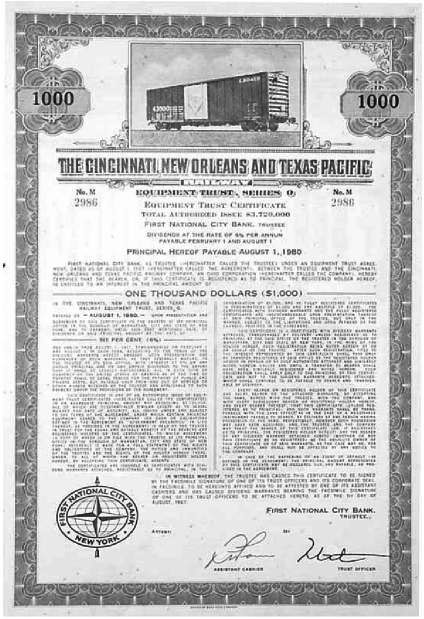
Serial numbers adding up
My crystal ball was in the shop when I started this little project. Had I been able to foretell the future, I’m pretty sure I would have done things differently.
Not knowing how this project would evolve, I initially kept track of certificates in a spreadsheet program. At that time, spreadsheets had serious size limitations. Therefore, the only things I tracked were prices, minimal descriptions, and ranges of dates. I did not have the space to record where I found prices, let alone serial numbers.
After all, I had one purpose. I was selling certificates at the time and wanted to know how to price them.
Eventually, I migrated the spreadsheet data to a flat file database, and then to a relational database. As the ability to store information grew, so did the scope of the project. As you might expect, I had to re-visit catalogs and price lists several times to re-gather information.
Serial numbers were an embarrassingly late addition. With the help of serious collectors in the United States and in Europe, the database now holds almost 28,000 serial numbers. Since the database is now online, everyone can see every serial number I have recorded so far.

Part of an 1872 view of the Wason Car Manufacturing Company of Springfield, Mass. from an engraving by J.N. Allen. No certificates yet known for this company.
The serial number database has grown to the point where it is finally helping disclose new varieties. It is also starting to show how rare – or not rare – some certificates are
With online serial numbers, collectors anywhere on earth can check rarity ... to a limited degree. When sellers claim their certificates represent “one of only two or three known,” collectors can now check whether that is likely to be true.
And they do. More collectors are currently using the database than sellers. That increased knowledge puts inexperienced online sellers at a disadvantage. (I dedicate several pages on my web site to helping beginner online sellers, but I don’t think many have discovered them.)
I want to stress that the serial number database intended to help both collectors and sellers. Obviously, the more serial numbers that get recorded, the more I can help.
Dealers and intermediate to advanced collectors know the value of tracking serial numbers. However, even with the help of dedicated collectors, it is not yet possible to find more than a tiny fraction of the serial numbers out there.
Will you help? I don’t care how you help. I just need your assistance. Please send me serial numbers in whatever manner is easiest for you. You can send electronic images, photocopies, spreadsheets, databases, or handwritten lists. (Photocopies are the best.)
When YOU need to check serial numbers for a particular certificate, go to the searchable database on my web site. Find the certificate you are interested in. If any serial numbers are recorded, a special “#” character appears to the right of the price estimate. Click on that symbol and a current list of all known serial numbers will pop up. (If you are not online, give me a few certificates to check and I will send you a list.)
Any ideas?
584 New Certificates Since December
|
1st Edition |
2nd Edition |
Currently |
| Number of certificates listed (counting all variants of issued, specimens, etc.) |
8,559 |
14,112 |
16,235 |
| Number of distinct certificates known |
7,152 |
11,146 |
12,667 |
| Number of certificates with celebrity autographs |
699 |
1,175 |
1,278 |
| Number of celebrity autographs known |
232 |
342 |
350 |
| Number of railroads and railroad-related companies known |
17,276 |
19,805 |
23,066 |
| Number of companies for which at least one certificate is known |
3,516 |
5,001 |
5,583 |
When you write
Whether you send an e-mail or write a letter, I try to get back to you as soon as possible, although that might take two or three days. I deal with railroad certificates in the evening, so my response time will depend on the amount of correspondence I need to answer.
I reserve my highest priority for contributors who send images and copies. I catalog images as quickly as I can and return short notes with current, up-to-the-minute census statistics.
Next, I turn my attention to general inquiries from people I know: collectors, contributors, subscribers, and dealers . If you are behind a large contribution, it may take a while longer to get back to you. But I will. (Serial number contributions are in this group.)
Finally comes answering general correspondence. I get many inquiries from people unfamiliar with the hobby. Unless an inquiry is completely weird, I try to answer those inquiries, too. Just not right away. Ultimately, many of those general questions end up as parts of the web site.

What kinds of serial numbers do I want?
Scarce and rare certificates: All. Be sure to include all letters that lead or follow the numerals.
Common certificates: Only numbers higher or lower than what is already listed. I specifically need serial numbers and dates that will help get closer to the times when companies switched between varieties and sub-varieties.
There are many cases of serial numbers that seem to have been issued out of order. Hand-written dates are hard to decipher and are not always reported accurately. But there are definitely some certificates that were issued non-sequentially. This might signal undiscovered sub-varieties. Or it might signal certificates that were somehow “reserved.” Any help on this curiosity will be appreciated.
Replies about the role of rarity
Thanks for all the letters you sent commenting about rarity, which I covered in the last newsletter. One of the things I have noticed is men over fifty — the primary group that collects certificates — don’t like to admit the role emotions play in their purchases. So they use rarity as a good proxy.
But, let’s face it. Emotions DO play a role. A primary role. I want to stress is that we do not collect things simply because they are rare. We collect them because they make us feel good. Whether they are cheap or expensive, common or rare.
And, yes, collecting rare items is much more thrilling. But let’s not deceive ourselves. Collecting is about feeling good.

Closeup of the Jackson & Sharpe “Delaware Car Works” at Wilmington, Delaware in about 1872. At the time this woodcut was made, the plant covered about 8 acres, and produced more cars than any other plant in the U.S. It was purported to have over a million board feet of lumber on the ground at any one time, to keep up with as many as sixty cars in simultaneous production. At right is a finished passenger car for the Central Pacific Railroad. At left is a Mobile & Ohio mail/baggage car. A few, very rare stock certificates from this company are known. (Woodcut engraving from The Great Industries of the United States, 1873)
Which brings me to a point...
I stress to beginners that if rarity is NOT what this hobby is all about, then it is NOT about price either.
I beg beginners to form relationships with dealers who treat them well. Specifically, dealers who make them feel good. Such dealers may not be low-price sellers.
So is price really the issue?
Among beginners, definitely. But the more experienced the collector, the less price matters. Let me give an example.
I recently bid on several books in an auction for the Colorado Railroad Museum. Every book I bid on is available from online used book sellers. So I bid a little above average prices, just to support the museum. I wanted the books for references. I am not a book collector. Consequently, I did not win a single bid.
The people who outbid me wanted the books for different reasons. They wanted the books more than me. They were collectors. And they were willing to prove it. Did they care that they were over-paying? Not in the least! For them, price was NOT the issue. Acquiring the book was.

One of five certificates currently known from The Cincinnati New Orleans & Texas Pacific Equipment Trust. Labeled series O. Does that mean we should find fourteen series before this one? The database lists 219 certificates from trusts. The top three companies with the most known certificates are the Seaboard Air Line Railway (25), the L&N Railroad (15) and the Seaboard Coast Line Railway (12). Illustration courtesy of William Knadler.
Equipment Trusts — I beg for help!
The area I need the most help with are equipment trust certificates. There are probably hundreds of yet uncatalogued varieties just waiting to be found.
Yes, collectors have been sending in a few certificates here and there. But instead of filling in holes, those new certificates often create completely new groups.
Equipment trusts are generally separated from one another by series designations. Some companies issued ten to twenty different series. The record might be close to 50 different series!!
So far, the listing of equipment trust series is nowhere near complete. Can you help?
The best way is to send
photocopies. That way, I can see all necessary details and won’t need to ask for more information. If you reduce certificates to 60% or 70% of original size, they will fit on ordinary letter-size or A4 paper. Just write the color in the bottom margin.
Electronic images (JPGs) are okay, but sometimes do not show sufficient detail. If you send JPGs, and the details do not show, please tell me issue date, due date, interest rate, series designation, and serial number.
So what’s with Canadian certificates?
Over the years, I have been surprised sale after sale with the low prices Canadian certificates seem to attract. Not just in American auctions, but auctions in Austria, Belgium, Germany, and Great Britain as well. And, let’s not forget about Internet sales. I have seen spotty occurrences of decent prices, but by and large, I see little evidence that Canadian certificates attract bids commensurate with their scarcity.
And there are many nice certificates out there. Some with good autographs, and many with high rarity.
Personally, I am really amazed that so few collectors seem to be interested in Canadian certificates. I am talking about all collectors, including thousands of collectors in the U.S. and Europe.
The interest in — and prices for — Mexican certificates has grown substantially. So, why the seeming disinterest in Canadian material?